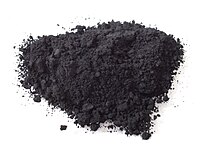
Photo from wikipedia
Encapsulated papillary carcinoma (EPC) of the breast is typically of low-to-intermediate grade (LTIG) with favorable prognosis. Rarely, high-grade (HG) EPC cases have been documented in recent years. Herein we compared… Click to show full abstract
Encapsulated papillary carcinoma (EPC) of the breast is typically of low-to-intermediate grade (LTIG) with favorable prognosis. Rarely, high-grade (HG) EPC cases have been documented in recent years. Herein we compared the morphological, immunohistochemical, and clinical features of LTIG EPC to those of HG EPC. Of the 30 EPC patients, 25 were diagnosed as LTIG and five as HG (median age: 60 and 36 years, respectively); 80% of the HG EPCs exhibited predominantly solid architecture with prominent lymphoplasmacytic infiltrates, more crowded and thicker papillae, and greater stratification and irregular arrangement of malignant epithelial cells. Coexisting invasive components were observed in 32% and 80% of LTIG and HG cases, respectively. HG EPC was negative for hormone receptor staining. Additionally, 48% of LTIG EPC cases were moderately positive for human epidermal growth factor receptor 2 (Her-2) immunostaining (2+); among them, one case showed Her-2 gene amplification by fluorescence in situ hybridization. The basal-like markers cytokeratin 5/6 and epidermal growth factor receptor were detected in two and five HG cases, respectively. HG EPC was also characterized by a significantly high Ki-67 index (median: 85%, P<0.001). No local recurrence or distant metastasis was noted during the follow-up. HG EPC typically exhibited a solid architecture with a concurrent invasive component as well as a triple-negative and basal-like immunophenotype in young women. HG EPC might be indicative of high proliferative activity and potential aggressiveness.
Journal Title: Histology and histopathology
Year Published: 2019
Link to full text (if available)
Share on Social Media: Sign Up to like & get
recommendations!